Jules Verne’s Forgotten Bermuda Adventure
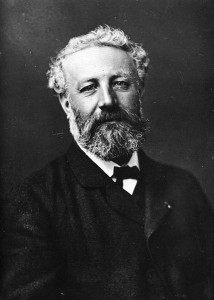 His prodigious imagination took him on journeys to the earth’s core, into lunar orbit — and to an imaginary islet off the coast of Bermuda where a mad genius develops a super-weapon of unlimited destructive power and anarchist pirates base a submarine which sinks and loots passing vessels.
His prodigious imagination took him on journeys to the earth’s core, into lunar orbit — and to an imaginary islet off the coast of Bermuda where a mad genius develops a super-weapon of unlimited destructive power and anarchist pirates base a submarine which sinks and loots passing vessels.
Along with English author H.G. Wells [1866-1946], French novelist and playwright Jules Verne [1828-1905] — whose works include “Twenty Thousand Leagues Under The Sea”, “From The Earth To The Moon”, “Journey To The Centre of the Earth” and countless other “voyages extraordinaire” — is considered one of the two founding fathers of modern science fiction.
In later life Verne [pictured] turned away from uncritically championing the technological progress of the Industrial Revolution, a hallmark of many of his most celebrated early books.
Instead, the author’s mature works began to reflect more sober-minded views of where the unprecedented wave of mechanisation in the 19th century was leading the world. Forecasting an era of submarines ["Twenty Thousand Leagues Under The Sea"], submarine warfare ["Facing the Flag"], rocketry ["From The Earth To The Moon"], elaborate globe-spanning flying machines ["Robur The Conqueror"], Jules Verne has been called called a “man of incommensurate genius” and an “incomparable master.”
In 1896 he wrote the prophetic “Face Au Drapeau” [known as both "Facing The Flag" and "For The Flag" in English translations], which critics say foreshadowed the era of weapons of mass destruction, the Cold War superpower stand-off and the emergence of transnational terrorist organisations like al-Quaeda.
The scientific romance tells the story kidnapped French scientist working for his pirate-anarchist captors on a volcanic islet off Bermuda’s Ireland Island, its crater lagoon only accessible by submarine [while Verne had anticipated the modern submarine in "Twenty Thousand Leagues Under The Sea", the first classic double-hull design, with a pressure hull inside the outer shell, did not go into service until 1900 -- fully four years after "Facing The Flag" had anticipated such vessels would become fixtures in the world's navies].
Pirate submarine in its Bermuda base [illustrations from first edition of "Face Au Drapeau" by L. Benett]
Thomas Roch, a brilliant French inventor, has designed a weapon so powerful that “the state which acquired it would become absolute master of earth and ocean.”
However, unable to sell his unproven idea to France or any other Great Power, Roch begins to lose his sanity, becoming bitter, megalomaniacal and paranoid.
He is confined to a luxurious asylum in New Bern, North Carolina, where he is visited by one “Count d’Artigas”—actually Ker Karraje, a notorious pirate whose band of cut-throats is made up of ”escaped convicts, military and naval deserters, and the scum of Europe.”
Karraje and his crew lead double lives. Karraje goes around openly, under the alias of “Count d’Artigas”, a pleasure loving, slightly eccentric but eminently respectable member of royalty. He is a regular visitor to the ports of the East Coast aboard his schooner “Ebba”. To outward appearances, “Ebba” has no other means of propulsion than its sails, but in fact it is towed by a submersible which acts as an underwater tug.
By this means, Karraje and his crew can pull up to becalmed sailing vessels without raising suspicion and board them without warning. They then rob and massacre the crews, scuttling the ships, adding to the statistics of “unexplained disappearances”.
HMS “Sword” searches for the submerged entrance to a pirate island off Bermuda in “Facing The Flag”
Karraje hears of Roch and his invention, takes them both seriously, and decides to gain possession of them. Actually, his aim is rather modest. He has no intention to seize mastery over the world, but just to make his hide-out impregnable.
He and his men successfully kidnap Roch from his American asylum, and then bring him to their hide-out — the desolate island of Back Cup in Bermuda.
Accessible only by submarine, Back Cup’s crater has been made into a well-equipped pirate base. It has its own electrical power plant, and is completely unknown to the rest of the world.
The installation of a modern industrial plant on the islet — producing huge plumes of black smoke which vent from its cone — is interpreted as a sign that the long dormant volcano has become active again; a fishing village established on the islet’s outer slopes decades earlier by Bermudian fishermen is hastily abandoned and commercial and military ships try and steer clear.
During the kidnapping, Karraje orders his men to also take along Gaydon, Roch’s attendant for the past 15 months. The reader knows – and, as is later shown, Karraje is also aware — that Gaydon is actually Simon Hart, a French engineer and explosives expert. Hart had decided “to perform the menial and exacting duties of an insane man’s attendant” in the hope of learning Roch’s secret and, thereby, saving it for France, actuated by “a spirit of the purest and noblest patriotism.”
From “Facing The Flag” Chapter VIII, “Back Cup”
Well, I know and recognize this islet! It is situated at the extremity of the archipelago of the Bermudas. It is the “reversed cup” that I had occasion to visit a few years ago—No, I am not mistaken. I then climbed over the calcareous and crooked rocks at its base on the east side. Yes, it is Back Cup, sure enough!
Had I been less self-possessed I might have uttered an exclamation of surprise—and satisfaction—which, with good reason, would have excited the attention and suspicion of the Count d’Artigas.
These are the circumstances under which I came to explore Back Cup while on a visit to Bermuda.
This archipelago, which is situated about seven hundred and fifty miles from North Carolina is composed of several hundred islands or islets. Its centre is crossed by the sixty-fourth meridian and the thirty-second parallel. Since the Englishman Somers was shipwrecked and cast up there in 1609, the Bermudas have belonged to the United Kingdom, and in consequence the colonial population has increased to ten thousand inhabitants. It was not for its productions of cotton, coffee, indigo, and arrowroot that England annexed the group—seized it, one might say; but because it formed a splendid maritime station in that part of the Ocean, and in proximity to the United States of America. Possession was taken of it without any protest on the part of other powers, and Bermuda is now administered by a British governor with the addition of a council and a General Assembly.
The principal islands of the archipelago are called St. David, Somerset, Hamilton, and St. George. The latter has a free port, and the town of the same name is also the capital of the group.
The largest of these isles is not more than seventeen miles long and five wide. Leaving out the medium-sized ones, there remains but an agglomeration of islets and reefs scattered over an area of twelve square leagues.
Although the climate of Bermuda is very healthy, very salubrious, the isles are nevertheless frightfully beaten by the heavy winter tempests of the Atlantic, and their approach by navigators presents certain difficulties.
What the archipelago especially lacks are rivers and rios. However, as abundant rains fall frequently, this drawback is got over by the inhabitants, who treasure up the heaven-sent water for household and agricultural purposes. This has necessitated the construction of vast cisterns which the downfalls keep filled. These works of engineering skill justly merit the admiration they receive and do honor to the genius of man.
It was in connection with the setting up of these cisterns that I made the trip, as well as out of curiosity to inspect the fine works.
I obtained from the company of which I was the engineer in New Jersey a vacation of several weeks, and embarked at New York for the Bermudas.
While I was staying on Hamilton Island, in the vast port of Southampton, an event occurred of great interest to geologists.
One day a whole flotilla of fishers, men, women and children, entered Southampton Harbor. For fifty years these families had lived on the east coast of Back Cup, where they had erected log-cabins and houses of stone. Their position for carrying on their industry was an exceptionally favorable one, for the waters teem with fish all the year round, and in March and April whales abound.
Verne’s imaginary Back Cup Island off the tip of Ireland Island
Nothing had hitherto occurred to disturb their tranquil existence. They were quite contented with their rough lot, which was rendered less onerous by the facility of communication with Hamilton and St. George. Their solid barks took cargoes of fish there, which they exchanged for the necessities of life.
Why had they thus abandoned the islet with the intention, as it pretty soon appeared, of never returning to it? The reason turned out to be that they no longer considered themselves in safety there.
A couple of months previously they had been at first surprised, then alarmed, by several distinct detonations that appeared to have taken place in the interior of the mountain. At the same time smoke and flames issued from the summit—or the bottom of the reversed cup, if you like. Now no one had ever suspected that the islet was of volcanic origin, or that there was a crater at the top, no one having been able to climb its sides. Now, however, there could be no possible doubt that the mountain was an ancient volcano that had suddenly become active again and threatened the village with destruction.
During the ensuing two months internal rumblings and explosions continued to be heard, which were accompanied by bursts of flame from the top—especially at night. The island was shaken by the explosions—the shocks could be distinctly felt. All these phenomena were indicative of an imminent eruption, and there was no spot at the base of the mountain that could afford any protection from the rivers of lava that would inevitably pour down its smooth, steep slopes and overwhelm the village in their boiling flood. Besides, the very mountain might be destroyed in the eruption.
There was nothing for the population exposed to such a dire catastrophe to do but leave. This they did. Their humble Lares and Penates, in fact all their belongings, were loaded into the fishing-smacks, and the entire colony sought refuge in Southampton Harbor.
The news that a volcano, that had presumably been smouldering for centuries at the western extremity of the group, showed signs of breaking out again, caused a sensation throughout the Bermudas. But while some were terrified, the curiosity of others was aroused, mine included. The phenomenon was worth investigation, even if the simple fisher-folk had exaggerated.
Back Cup, which, as already stated, lies at the western extremity of the archipelago, is connected therewith by a chain of small islets and reefs, which cannot be approached from the east. Being only three hundred feet in altitude, it cannot be seen either from St. George or Hamilton. I joined a party of explorers and we embarked in a cutter that landed us on the island, and made our way to the abandoned village of the Bermudian fishers.
The internal crackings and detonations could be plainly heard, and a sheaf of smoke was swayed by the wind at the summit …”
Hart is kept imprisoned at the pirate base, though in quite comfortable conditions. He can only watch in dismay as the pirate chief easily manages what four governments in succession have failed to do: win Roch over.
Roch is given “many rolls of dollar bills and banknotes, and handfuls of English, French, American and German gold coins” with which to fill his pockets. Further, Roch is formally informed that the entire secret cavern and all in it are henceforward his property, and egged on to “defend his property” against the world which has wronged him so badly.
Soon, the inventor is busy constructing his fearsome weapon, happily unaware that he is nothing but a glorified prisoner in the pirate’s hands.
The paranoid Roch does, however, keep to himself the secret of the detonator or “Deflagrator”, a liquid without which his super-explosive is merely an inert powder. By holding fast to that last secret, Roch unwittingly preserves the life of his ex-keeper Gaydon/Simon Hart.
Karraje suspects, wrongly, that Hart knows much more of Roch’s secrets than he is willing to let on. It serves the purposes of the pirate chief, a completely ruthless killer, to let Hart live.
Dispatched from Dockyard, HMS “Sword” does battle with the pirate submersible
The pirate engineer Serko, Hart’s “colleague,” hopes to win him over in prolonged friendly conversations. Hart’s reticence is misunderstood as proof that he has something to hide.
The pirates underestimate Hart, giving him a practically free run of their hide-out, since the only way out is via submarine. But after carefully studying the currents, Hart succeeds in secretly sending out a message in a metal keg, giving the full details of Karraje’s operations and his impeding acquisition of the super-explosive.
The message gets through to the British authorities at the nearby Royal Naval Dockyard in Bermuda. They dispatch a Royal Navy submarine, “HMS Sword”, to find Hart.
The submarine’s crew makes contact with Hart, and take him and Roch on board, but the “Sword” is discovered, attacked and sunk by the pirates in a direct underwater submarine battle.
The unconscious Hart and Roch are extracted from the sunken British sub by pirate divers, leaving the entire British crew to perish. Hart manages to convince the pirates that he had been kidnapped by the British sailors and had nothing to do with their “visit.” He resumes his role as a tolerated prisoner with a free run of the pirate base.
Meanwhile, Roch’s weapon is completed and becomes operational. A hastily gathered international naval task force approaches the island, consisting of five warships dispatched by the world’s five largest Great Powers.
;Bermuda-based pirates loot sunken ships in the movie adaptation of “Facing The Flag”
The weapon, operated personally by Roch himself, works fully as advertised. Roch has no compunction in using it on British or American ships, and the first cruiser to approach the island is easily destroyed with only a handful of its crew surviving. Undaunted, the next ship approaches the shore, and the moment comes towards which the entire book was leading and from which its title was drawn: “A flag unfurls to the breeze. It is the [French] Tricolour, whose blue, white and red sections stand out luminously against the sky …”
Having at the moment of truth, rediscovered his patriotism, Roch refuses to fire on his country’s ship.
He struggles with the pirates who try to seize the detonator super-explosive. During the struggle Roch resorts to blowing up himself, his weapon, the pirates along with the entire island. The single survivor of the cataclysm is Simon Hart, whose unconscious body with the diary at his side is found by the landing French sailors.
Hart is eventually revived, to be amply rewarded for his dedication to his country. He proudly bears witness to Thomas Roch’s last-minute change of heart and self-sacrifice. French patriotism is the moral and material victor.
Although it remains one of his lesser-known works, one 20th century critic said “Facing The Flag” is the book which “persuaded me as a teen that Jules Verne was indeed a time traveller.
“When I first read it – in the Cold War, before Perestroika — I [thought] it was a book about today… Only when my grandfather smiled at me and asked me, if I knew when it had been written, I realised, and was gobsmacked.
“The Fabulous World of Jules Verne” [1958] is based on “Facing The Flag”
Another on-line reviewer has said: “[It] is a very good book. It is interesting to note that after predicting submarines in ‘Twenty Thousand Leagues Under the Sea’, Verne takes it one step further in this novel, predicting submarine warfare. Then he makes another prediction in an explosive of extraordinary destructiveness, which can easily be taken to be a metaphor for nuclear explosives, if this book wasn’t written 70 years before the advent of such devices. This book effectively predicts the Cold War. Also, the whole thing with James Bond villains having secret lairs in volcanoes. Yeah, that came from this book.”
Film and cultural historian Thomas C. Renzi considers Roch the archetype of the “mad scientist,” the thriller fiction stock character of a monomaniac whose warped genius endangers the world. If so, such James Bond books as “Dr. No” and “Thunderball” and the 007 movie “You Only Live Twice” — with their diabolically brilliant villains operating from remote island bases — can be considered direct descendants of “Facing The Flag.”
In 1958, Czech director Karel Zeman used the novel as the basis for his widely acclaimed film “Vynález zkázy” [also known as "The Deadly Invention" and "The Fabulous World of Jules Verne"], which mixes live action with animation.
“… There is an undeniably poetic fairy-tale quality to it,” said New York’s Museum of Modern Art prior to a retrospective screening of “Vynález zkázy” in 2012. “In a sense, the scientific element focused on the evil under-belly of science, informed by the hindsight of Hiroshima. The net effect of Zeman’s film was a bubbling over … of unprecedented imagination.”
The film, which employed an animation style inspired by Leon Benett’s steel engravings in the original edition of Verne’s novel, won the Grand Prix at the International Film Festival at Expo 58 in Brussels.
Read More About
Category: All, Entertainment, History
Comments (2)
Trackback URL | Comments RSS Feed
Articles that link to this one:
- H.G. Wells: The War Of Words In Bermuda | Bernews.com | March 17, 2013

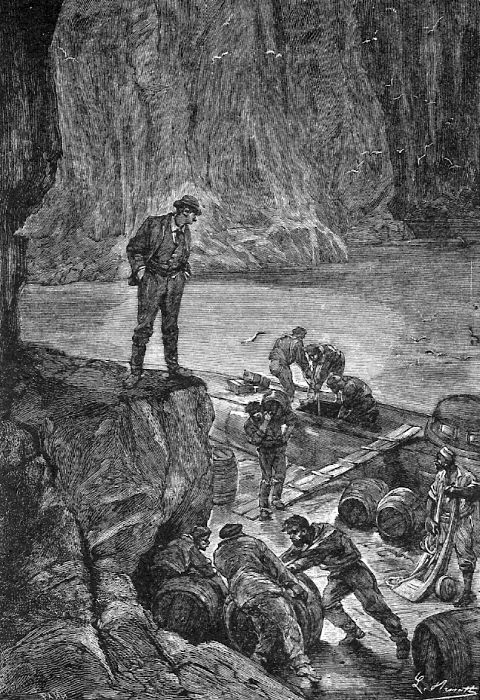
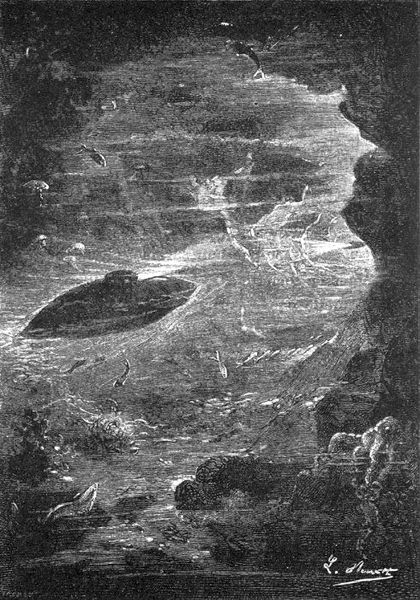
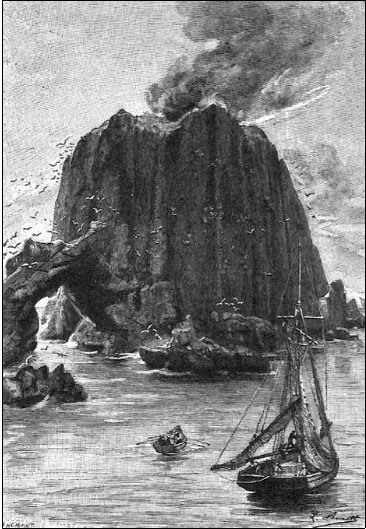
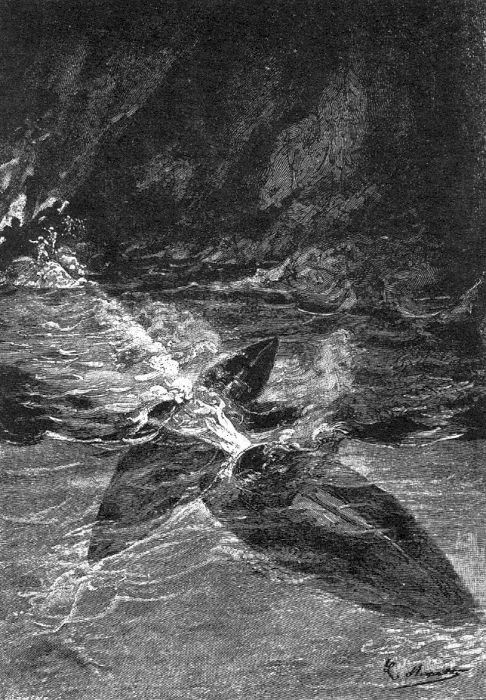
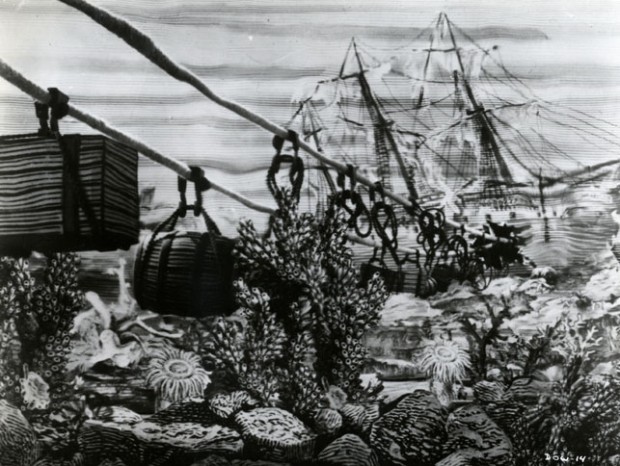

I got to say, that was really interesting. Had never heard of this book, although I’m a big fan of Jules Verne. Definitely going to see if I can’t get a copy of it!
Thank you for posting this!